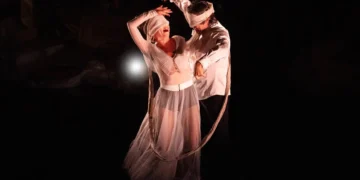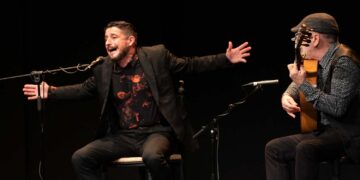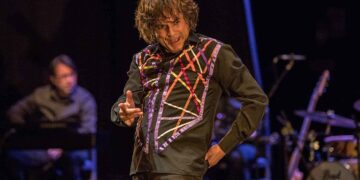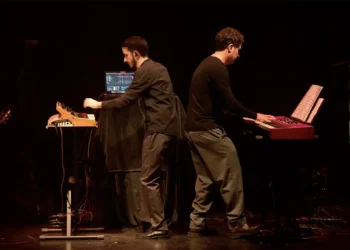|
XV FESTIVAL DE JEREZ |
|
Text: Estela Zatania Andalucía’s regional day, and the fourth day of the Festival de Jerez. People continue to arrive, the weather is holding this year and at midday the outdoor cafés are full of visitors from abroad; you feel the festival throughout the city. At seven in the evening, the first recital of the series of acoustic cante within the series “Los Conciertos del Palacio” was held. The winner of last year’s Lámpara Minera, the highest honor of the La Unión contest, had sung many times before in the festival for major dance groups, but this was his first solo turn. The small venue of the Villavicencio didn’t fill up, all too common when the featured artist is not from Jerez, but you could feel the presence of a select audience of admirers and friends of the singer from Los Palacios. When we say “acoustic”, it refers to the absence of amplification, but this man’s powerful voice, cultivated through years of singing for dance, needed no artificial boost to be heard. With his regular guitarist, the much underestimated Manuel Herrera from San José de la Rinconada, he filled the room with alegrías and cantiñas, employing an aggressive delivery not typical of Cádiz, and yet very flamenco. Following this, he recreated the mining cante that had served him so well in La Unión. In soleá he interpreted a mini anthology of styles, and Herrera was exceptionally brilliant. Somehow soleá seems to inhabit Seville artists, the way siguiriyas comes natural to those from Jerez. In bulerías, with the palmas of Diego Montoya and el Tate, Ortega sang material of Turronero’s and some very flavorful classic cuplé. He closed his performance with fandangos dedicated to, and inspired in the late Paco Toronjo, one of his idols. JAVIER BARÓN “VAIVENES” Dance: Javier Barón, Carmelilla Montoya, Ana Morales, David Pérez, Antonio Molina “El Choro”. Cante: José Valencia, Pepe de Pura, David Palomar. Guitar: Rafael Rodríguez, Javier Patino. Cuban tres: Raúl Rodríguez. Violin: Alexis Lefevre. Percusión: José Carrasco. Coreografía: Javier Barón. Dancer Javier Barón from Alcalá moves in his own private space. Surrounded by the roar of cante, guitar and percussion, he is the essence of effortless control and psychic calm within the protected zone of the compás. Thus begins “Vaivenes”, a string of dances, songs and a variety of scenes, that work within the pretext of recreating the ambience of Seville’s fertile flamenco territory that stretches between Alcalá and Morón de la Frontera, with a certain nostalgic intent as one gathers from brief audiovisual interludes. I saw the premiere performance five months ago at the Bienal de Sevilla – it’s always interesting to follow the evolution of a show. In this case, we have a well-structured libretto that has changed little, and has maintained the high level and freshness of some discretely novel, though not ground-breaking ideas. Beginning with a fiesta finale, the soleá which is Barón’s I.D. card and imbues the entire show, the singing of dancer Carmelilla Montoya, a beautiful violin solo, the dancing and reciting of David Palomar, classic panaderos danced by Ana Morales and David Pérez, José Valencia’s saeta, Raúl Rodríguez clutching his Cuban tres and giving the flavor of the Antilles to a guajira, the guitar-playing of Diego del Gastor as evoked by Rafael Rodríguez, the farruca accompanied by violin and tres which sounds so middle European and the carnival number with everyone dressed as bakers… The show is a catalogue of Javier Barón’s memories, things that make up his world and bring him joy. It’s precisely that honest open spirit that makes “Vaivenes” work so well. And of course, the quality and capacity of the artists has every thing to do with it as well. At 12 midnight, the party continued at the Peña Tío José de Paula with the homespun dancing of the famous group of housewives from the Peña. Anyone predisposed to do so has no problem following the flamenco thread at the Festival de Jerez. |

























